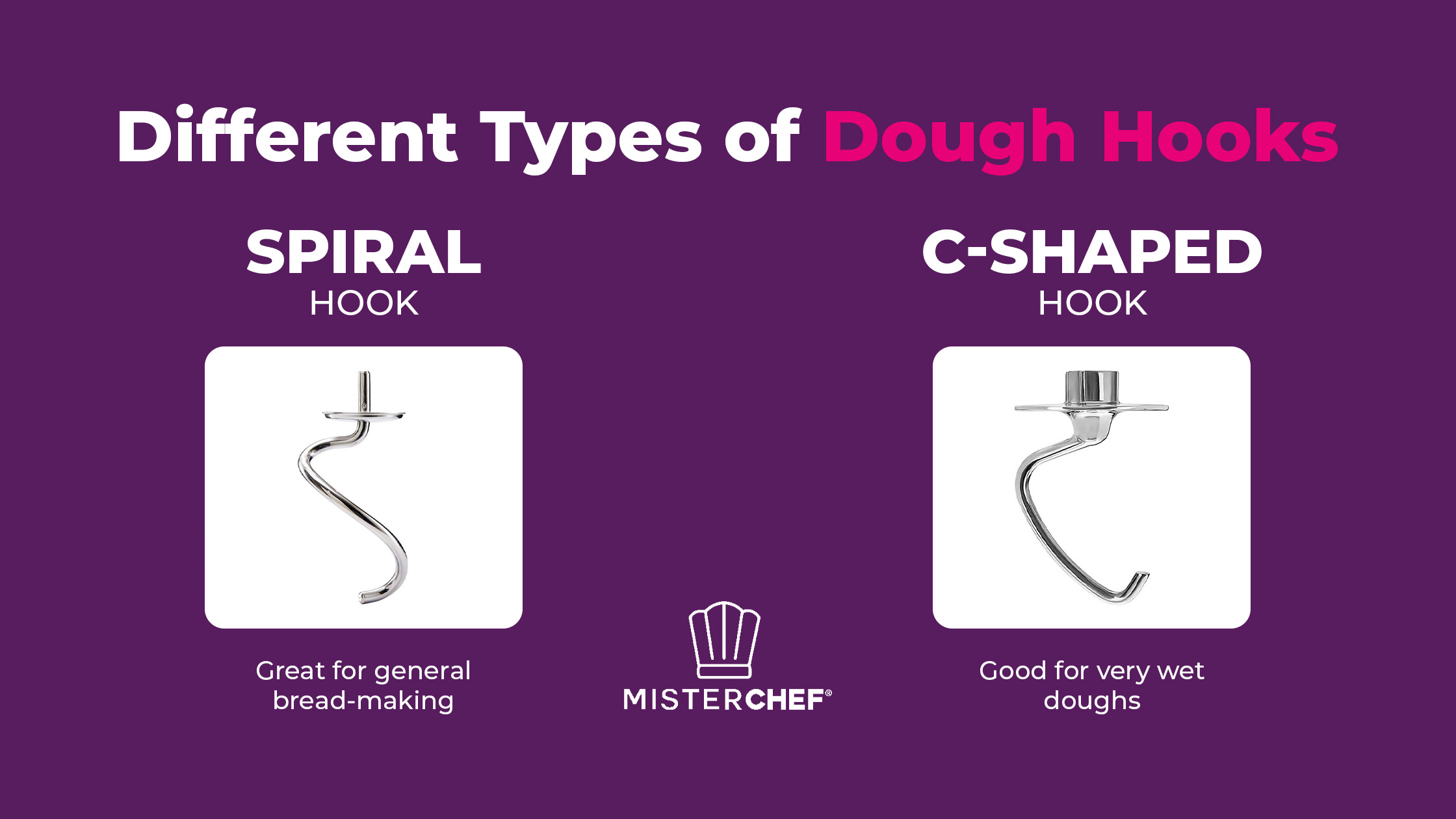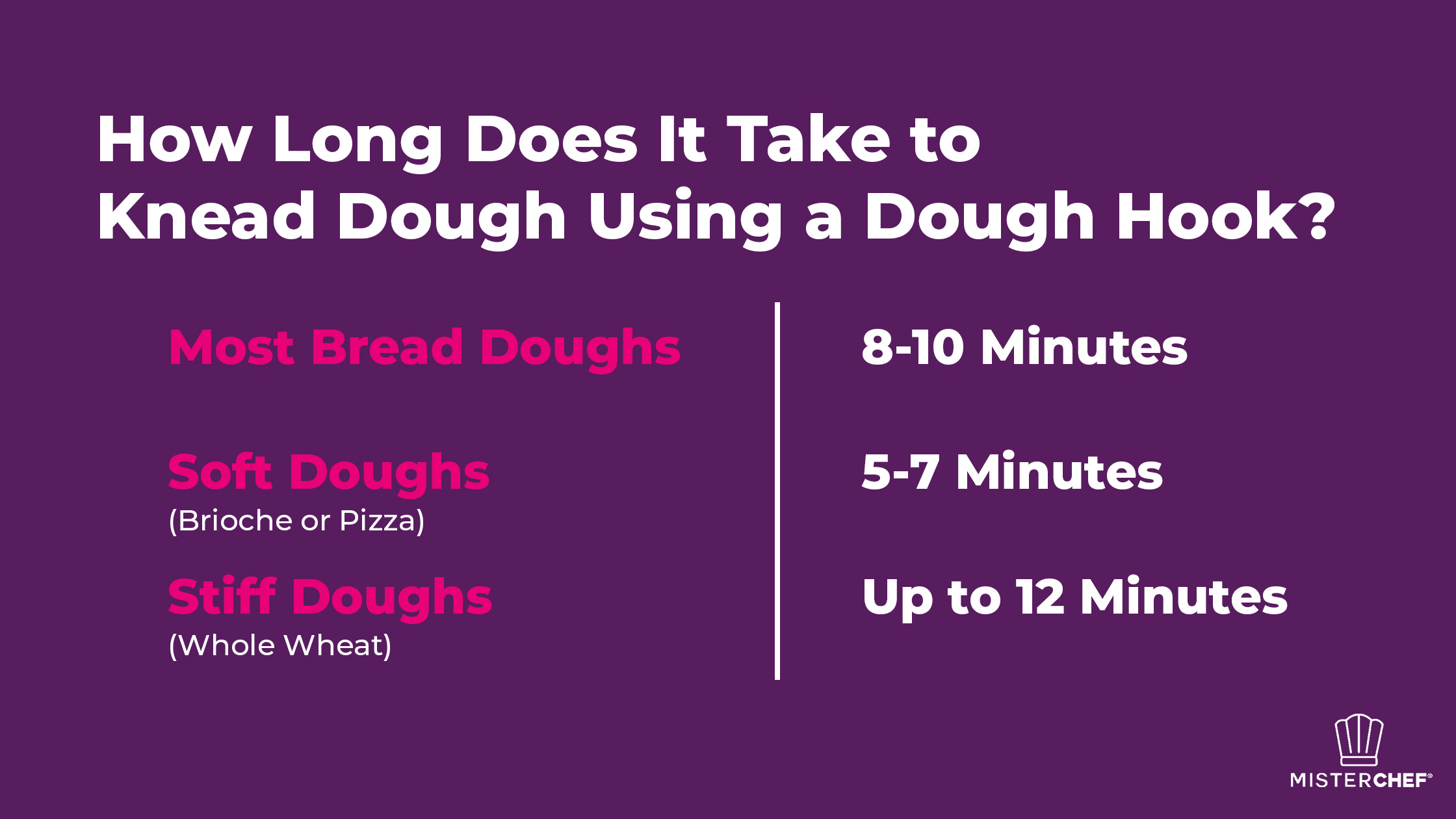A dough hook is a special stand mixer attachment shaped like a ‘C’ that helps knead dough. It’s designed to mimic the motion of hand kneading but without the effort. It’s especially useful for working with dense or heavy dough, like bread dough. In this guide, we’ll show you how to use your dough hook attachment.
Is a Dough Hook Better than Hand Kneading?
Yes, it is. It kneads dough quicker and with much less effort than kneading by hand. This is especially helpful if you bake often or make big batches of dough. It ensures that the dough is kneaded evenly, which is crucial for getting that perfect bread texture.
Another plus is that the dough hook keeps the dough cooler. When kneading dough by hand, the warmth from your hands can sometimes affect how the yeast works. This can affect your bread’s final rise and texture.
Are There Different Types of Dough Hooks?

Yes. The most common type is the ‘C’ shaped hook, which is great for general bread-making. This hook efficiently pushes the dough down into the bowl as it mixes, making it ideal for yeast breads that require thorough kneading.
Another popular type is the spiral hook. Unlike the ‘C’ shape, a spiral hook looks more like a corkscrew and works by gently pulling the dough from the bottom of the bowl and folding it over. This design is particularly good for very wet doughs and can handle heavy loads without pushing the dough up the sides of the mixing bowl.
How to Use a Dough Hook
Here’s a step-by-step guide on how to use a dough hook:
Step 1: Attach the Dough Hook and Add the Ingredients
First, attach the dough hook to your stand mixer. Make sure it’s securely in place according to your mixer’s instructions. Next, start by adding your wet and dry ingredients to the mixer bowl. It’s usually best to add the liquids first, then the dry ingredients on top.
Step 2: Mix on Low Speed
Once your dry and wet ingredients are in the bowl, begin mixing at a low speed to combine everything. Once everything forms into a rough dough, you can gradually increase the speed to a medium setting.
Step 3: Knead the Dough
Let the mixer run for about 8 to 10 minutes. Keep an eye on the dough’s consistency: it should start to pull away from the sides of the bowl and wrap around the hook. If the dough is still sticky and clings to the sides, you might need to add a little more flour. Just add a tablespoon at a time until you reach the right consistency.
Step 4: Remove the Dough
It’s important not to over-knead the dough. You’ll know it’s kneaded enough when it’s smooth, elastic, and slightly tacky to the touch, but not sticky. Once kneaded, remove the dough from the hook and bowl. Your dough is now ready for the next steps in your recipe.
How Long Does It Take to Knead Dough Using a Dough Hook?

Kneading time can vary depending on the type of dough you’re making. Typically, it takes about 8 to 10 minutes for most bread doughs. For softer doughs, such as those for brioche or pizza, it might take a bit less time, around 5 to 7 minutes. Stiff doughs, like whole wheat, might need a bit longer, possibly up to 12 minutes.
Tips and Tricks When Using a Dough Hook
Here are some practical tips and tricks for using a dough hook effectively to make great bread.
1) Monitor the Dough’s Temperature
Dough can warm up due to the friction of the mixing process. Ideally, you want to keep the dough temperature below 80°F (27°C) to prevent overheating which can kill the yeast and affect the rise. If the dough feels too warm, let it rest for a few minutes or place the entire bowl in a cooler spot.
2) Listen to Your Mixer
If your mixer starts to sound strained or if it’s rocking, the dough might be too stiff. This can happen with high-protein flours or if too much flour has been added. Ease up by adding a little water or reducing the mixer’s speed.
3) Check for Gluten Development
To see if the dough is kneaded enough, perform the windowpane test. Take a small piece of dough and stretch it between your fingers. If it can stretch thin enough to let light pass through without tearing, the gluten is well-developed, and the dough is ready.
Summary
A dough hook not only saves time and effort but also enhances the consistency and quality of your baked goods. Now that you know how to use one, go ahead and try it out.
Ready to take your baking to the next level? Check out MisterChef’s Stand Mixer. With its powerful motor and versatile attachment including a dough hook, paddle attachment, and whisk, baking is a breeze. Shop with us today.







